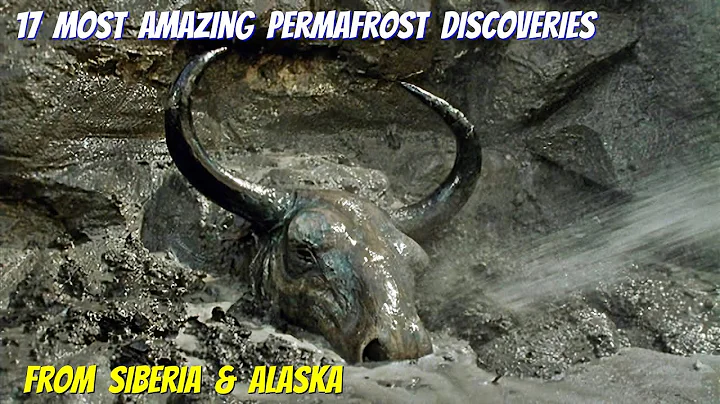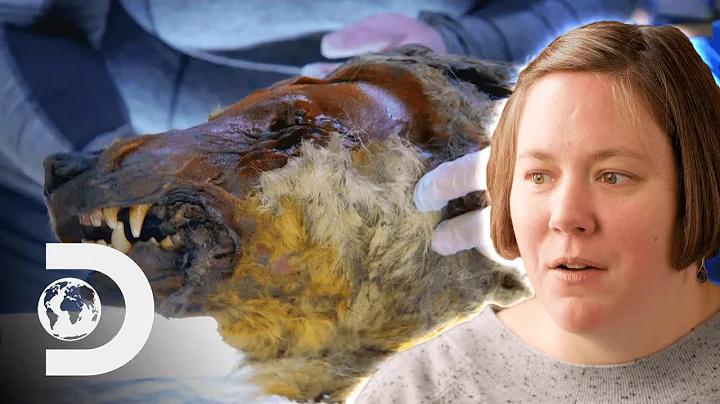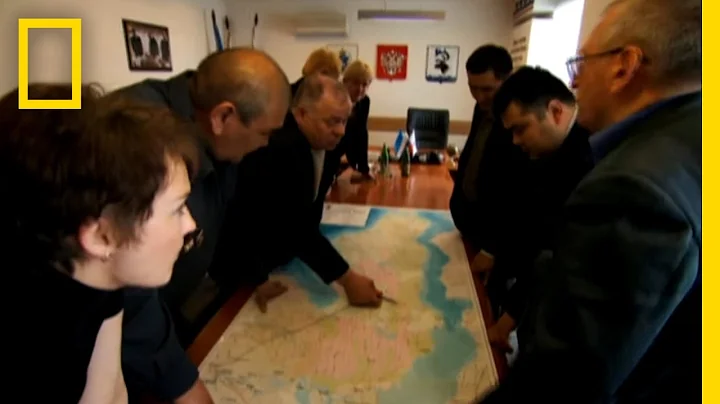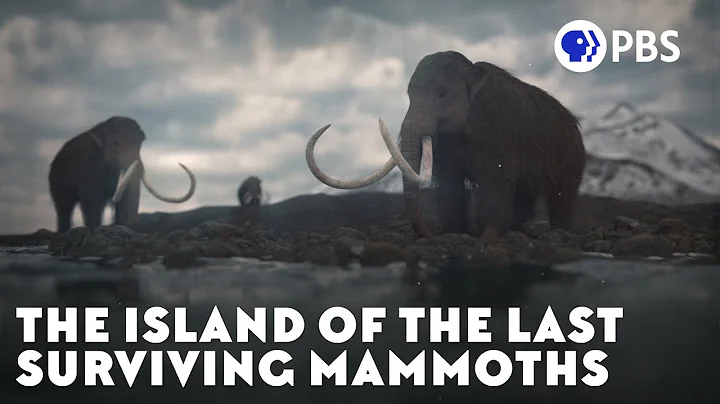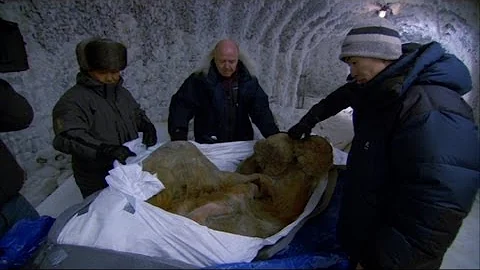
Recently, it was announced in the Yukon Territory in northern Canada that an almost complete 35,000-year-old baby woolly mammoth mummy was discovered. This baby mammoth, which lived in the Ice Age, is only one month old and still has a few pieces of grass it ate in its stomach. Due to the climate and specific conditions of the Ice Age, its skin, hair, nails and intestines were successfully preserved.
The sleeping baby mammoth mummy was unearthed
On June 21, in the Yukon Territory in northern Canada (Yukon), young miners started the loader and prepared to dig out something shiny from the permafrost of the Klondike gold mining area. Something bright. But not long after digging, the front end of the loader hit a dark, frozen object.
He immediately called his boss and then contacted a paleontologist he knew. Later he learned that the mass he dug up turned out to be the mummy of a baby mammoth.
Being part of the recovery of Nun cho ga, the baby woolly mammoth found in the permafrost in the Klondike this week (on Solstice and Indigenous Peoples'Day!), was the most exciting scientific thing I have ever been part of, bar none. https://t.co/WnGoSo8hPkpic.Twitter.com/JLD0isNk8Y
— Prof Dan Shugar (@WaterSHEDLab) June 24, 2022
Yukon archaeologists were notified by the mining workers and dispatched to assist in the follow-up processing, and the baby mammoth was The mummy rests on a blue tarp.
Frozen for 35,000 Years
Grant Zazula, a paleontologist in Canada's Yukon Territory, said excitedly that this is one of the rarest Ice Age animal mummies in the world. The baby woolly mammoth is well preserved and is a female elephant, about Frozen for 35,000 years.
"It is perfect and beautiful. It has a trunk and a tail, and small ears. It also has a small and long trunk, which allows it to roll up leaves and eat them," Zazula said.
sticks to skin, hair...and intestines!
Zazula described the discovery as "the most significant paleontological discovery in North America" because the baby mammoth still had intact skin and hair.
Dan Shugar, a geologist who participated in the excavation of the baby woolly mammoth, also shared his surprise on Twitter after seeing the baby woolly mammoth. "Its toenails, skin, hair, trunk and intestines are all incredibly preserved!"
The Yukon Government of Canada also announced that this baby mammoth is the most complete mammal mummy found on the mainland. .

Lyuba, a baby mammoth mummy unearthed in Siberia, Russia, in 2007, lived 42,000 years ago. Lyuba is very similar in size and age to the baby woolly mammoth mummy discovered in Canada's Yukon. (Source: Dazhi Pictures)
If you don’t pay attention, you will become a little life frozen forever
What exactly did this little woolly mammoth go through during his lifetime? How could it be mummified? Based on the information at hand, Zazula speculated on the possible activities of the baby woolly mammoth before its death.
The baby mammoth is about 140 centimeters long and only about one month old. There are still a few leaves in its stomach. Zazula speculated that it moved to graze farther away from the land, away from its mother's sight, and soon became trapped in the mud, breathless, and frozen in the permafrost of the Ice Age, forming a mummy.
"In that state, you would be buried very quickly if you were stuck in the mud," Zazula added.
belongs to the Aboriginal reservation.
Since the baby woolly mammoth was found in the Dawson Indian Society (Tr′ondëk Hwëch′in), the Aboriginal reservation in the Yukon Territory of Canada, the baby woolly mammoth will belong to the Dawson Indian. All owned by Anshe. Peggy Kormendy, an elder of the Dawson Indian Society, recently held a naming ceremony for a baby woolly mammoth, naming it Nun cho ga in the Hän language, which means "very big animal." Baby".
Kemendi described that the moment he saw the baby mammoth, he couldn't help but exclaimed: "This is amazing! When the tarpaulin was opened, I almost forgot to breathe. We must treat it carefully.""
Roberta Joseph, chief of the Dawson Indian Society, also said: "This discovery is of great significance to the Dawson Indian Society. We also look forward to cooperating with the Yukon government to carry forward our traditions, culture and laws. ways to find the best way to deal with these unearthed animals. ”
And as soon as we finished up, the skies opened to an absolute downpour with lightning, hail, mud that seemed to come from the ground upwards. pic.twitter.com/a39YHYJFFf
— Prof Dan Shugar (@WaterSHEDLab)June 24, 2022
Geologists thanked the mining workers on Twitter for notifying them, and were thankful that the heavy rain came only after processing the unearthed work of the baby woolly mammoth.
Yukon contains archaeological treasures
The baby woolly mammoth discovered this time is not the first glacial discovery in the Yukon. During the Ice Age, in addition to woolly mammoths, there were also wild horses, cave lions (Panthera leo spelaea), and long-horned wild horses in this ice field. Bison latifrons galloping.
The Yukon Territory first developed as a result of the gold rush. After the American miner George Carmack dug up gold near the Londike River in the spring of 1870, tens of thousands of people flocked to pursue it. Gold dream. This gold rush lasted for more than 30 years before gradually fading, leaving empty Dawson City (Dawson City).
There are still a few mining companies operating in the Yukon, such as the discovery of Little Longhair. The Treadstone Mining Company of Elephant Mummy works closely with the government and archaeologists. Many archaeological discoveries in the Yukon rely on the immediate discovery and reporting of these mining companies.
Zazula said with emotion. I don’t know where else in the world there is cooperation between the mining industry and the archaeological community like we do. At least in the Yukon, the collaboration is going pretty well. "
" Not only are they willing to help us with archaeology, but they are also willing to hand over the fossils they find to us. They are also very excited to participate in archaeology and work with archaeological colleagues, just like real scientists. ” said Zazula.
(First image source: Prof Dan Shugar)


